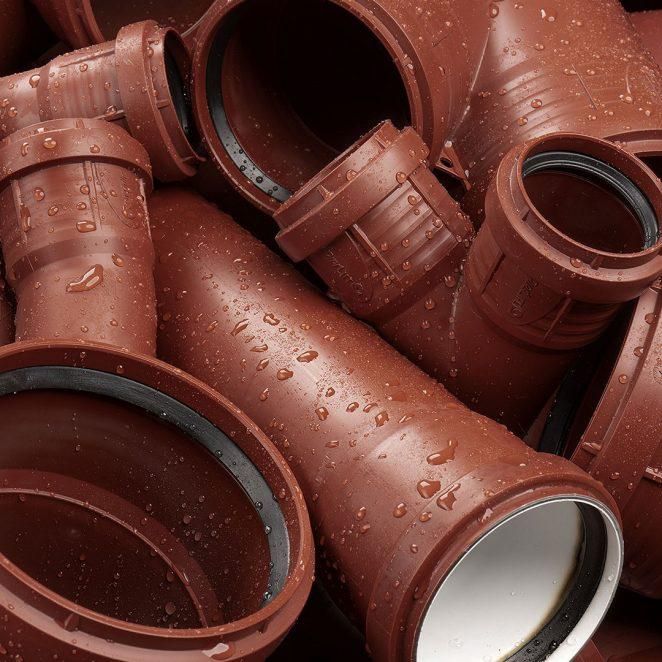soil pipes
What are soil pipes?

Soil pipes (also known as soil vent pipes) transport sewage away from toilets, urinals and bidets into sewer systems – helping to regulate pressure in the drainage system.
What makes soil pipes stand out from other types of pipes is that they have a vented section. This is usually placed at the top or near the top of a building and allows the safe ventilation of gases – minimising nasty smells and protecting the environment.
What are soil pipes made of?
Most modern properties have plastic soil pipes. These are lightweight, which makes them easy to transport and install, and their smooth internal surface reduces the risk of materials getting stuck and causing blockages.
Plastic soil pipes are incredibly flexible and provide excellent resistance to chemicals. They’re also available in longer lengths, meaning that fewer joints are required to complete the installation.
Older properties, on the other hand, generally have cast iron soil pipes. Not only are these long-lasting, recyclable and low maintenance, but they’re also resistant to heat damage and won’t deflect under heavy loads.
Cast iron soil pipe systems are at risk of containing asbestos though. This will need to be removed and disposed of safely and correctly by a professional.
What is the difference between a soil pipe and a waste pipe?
Exactly as their name implies, soil pipes are designed to carry soiled water (blackwater) from washrooms.
Waste pipes are used to transport wastewater (greywater) away from sinks, showers, baths and washing machines into the mains sewer.
Waste pipes have a smaller diameter and are narrower, as they are only used to carry water – unlike soil pipes which transfer solids and liquids.
Another difference between them is that soil pipes are vented. Waste pipes don’t usually generate harmful gases, so don’t need to be vented high above the ground.
How high does a soil vent pipe need to be?
Soil pipe height depends on building regulations.
Approved Document H states that the opening of ventilation pipes must be at least 900mm above any building within 3m of the pipe. The vent itself also needs to be perforated or protected with a wire cage to prevent birds and debris from entering.
Soil pipes need to be 200mm above the highest water entry point. If your pipe is less than 3m from a window, the vent needs to sit at least 900m above the window or opening.
Where can I buy soil pipes?
Whether you need to purchase cast iron-effect, push-fit or solvent weld soil pipes and fittings, you need to make sure that you got to a reputable supplier. This way, you can trust that you’ll receive top-quality products for a competitive price.
Build Plumb Plastics has a wide range of soil pipes and fittings available, including traps, u-bends, connectors and overflow pipes for push-fit and solvent weld systems.
Why not click on the different category pages? Find out more about the products they stock and buy the best ones for your needs.
If you have any questions about soil pipes or are unsure which to choose, call BP Plastics on 01255 258 525.



 StableDiffusion
StableDiffusion StableDiffusion
StableDiffusion StableDiffusion
StableDiffusion Photo by
Photo by  Photo by
Photo by  Photo by
Photo by 
 Photo by
Photo by  Photo by
Photo by  Photo by
Photo by  Photo by
Photo by  Photo by
Photo by 







